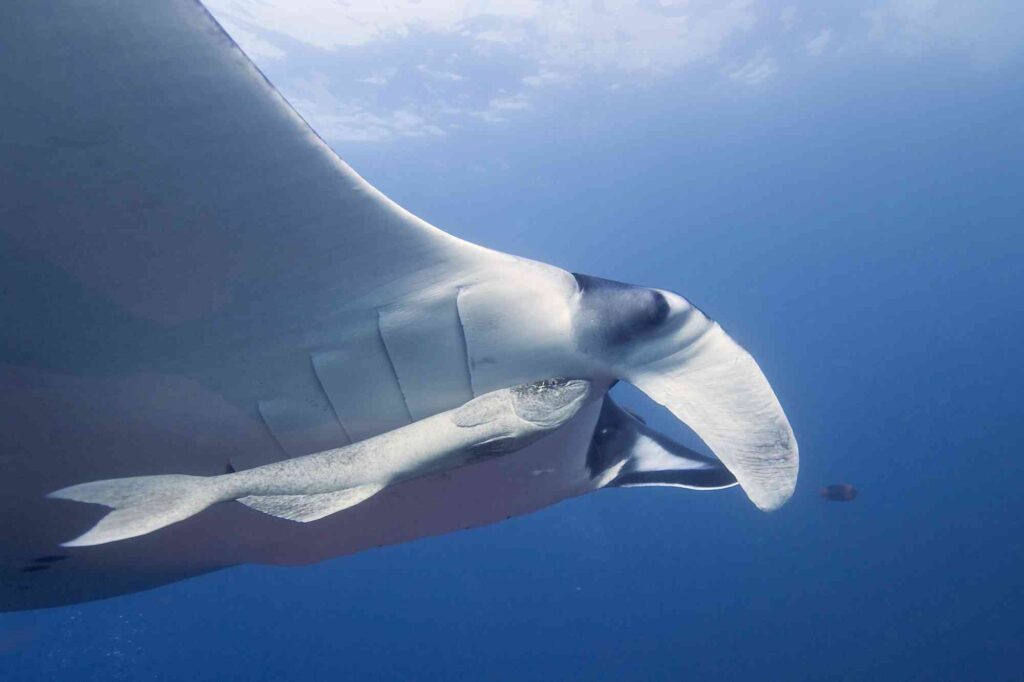
Manta rays–highly intelligent and highly threatened–are the largest rays in the world.
Sea creatures reside in subtropical, tropical and temperate waters around the world. “Manta” means blanket or cloak in Spanish, describing the look of the animals’ massive, flat, diamond-shaped bodies and are distinguished by triangular pectoral fins. Manta rays have two fins shaped like horns that protrude from their heads. This has given them the nickname “devil fish.”

For many years, scientists believed there was just one manta ray species. In 2008, scientists discovered that there were actually two distinct species which include the reef manta-ray that lives near coastlines in the Indo-Pacific and the gigantic oceanic manta ray, which can be found throughout the world’s major oceans, spending the majority of its time away from the land.
Habitat and food
Manta Rays are two species. Both are filter feeders: they have mouths that are wide open, drawing in the zooplankton and krill that they filter through tiny teeth that line their mouths and are known as gill plates. They use creative techniques when feeding, often doing repeated somersaults to stay in a single spot that is packed with krill, or chain-feeding–following each other in a circle, mouths open, to create a cyclone effect, trapping food in a spiral.
Giant mantas are rays that live on their own or in small numbers, generally congregating to feed. They’re considered predators as they hunt below the surface of the ocean.
Manta rays regularly go to cleaning stations–spots on coral reefs, that sea creatures go to be cleaned by smaller creatures–where they are able to remain for several minutes while cleaner fish get rid of parasites and dead skin. A lot of manta rays go to the same spots frequently.
Intelligence
Manta Rays have the biggest brain-to-size ratio among cold-blooded fish. Studies have demonstrated that manta rays can recognize themselves in mirrors, an ability indicative of high cognitive function, as demonstrated by dolphins, primates, as well as elephants.
The research has also demonstrated that manta-rays are able to create mentally-mapped maps of their surroundings by smelling and visual cues, indicating highly developed long-term memory.
Reproduction
Manta rays reach sexual maturity at around eight up to 10 years of age. They usually give birth every couple of years, usually to one pup, and sometimes even two. Pregnancy lasts about 12 to 13 months and manta rays have live pups. The babies look like miniature versions of adult manta rays when born and can immediately survive without the parental supervision.
Manta Rays can live up to 50 years.



